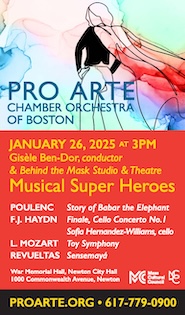Mozart and Beethoven fare best in Llewellyn’s H&H program
In October 1802, Beethoven stood at a crossroads.
Secluded in the town of Heiligenstadt, a quiet, wooded village near Vienna, the composer put to paper a testimonial—part confessional, part suicide note—in which he struggled to come to terms over his ever-worsening deafness. Only his art, he wrote, kept him from ending his life.
The works that would follow this private revelation show a composer at his most original and revolutionary. Yet even in his Symphony No. 2 in D major, composed from 1800-1802, Beethoven was already pushing beyond the limits of traditional symphonic form.
Sunday afternoon in Symphony Hall, the Handel and Haydn Society, with former director Grant Llewellyn at the helm, offered a vibrant and clear rendering of the work.
Sketched at the same time as his Third Symphony, the ground-breaking “Eroica,” No. 2 contains many ear-bending features. Melodic motives pass in and out of major and minor keys in unexpected ways, and there are long stretches of harmonic stasis that leave one wondering, even today, where the composer is taking the listener.
Llewellyn led the H&H period-instrument orchestra with steady tempos and a clear idea of the music’s architecture. The musicians responded with crisp playing from the start of the opening Adagio, trading phrases between solo winds with ease. The conductor’s deliberate approach to the tempos in the ensuing Allegro and third-movement Scherzo allowed plenty of room for the musicians to put across the energetic and sometimes tempestuous music with flair. Winds and strings coalesced for a warm blend in the sensuous Larghetto. Llewellyn opened the throttle for the manic finale, which the orchestra played with supple flow.
The concert’s opener, Mozart’s Symphony No. 35 in D major, known as the Haffner, shares the same energetic qualities. Written for a family friend of Mozart’s, the symphony is both bold and charming.
Llewellyn and the H&H musicians delivered a graceful and spirited reading. The conductor kept to a brisk tempo for the first movement, where torrents of sixteenth notes in the strings come to rest in serene woodwind textures before picking up again. Especially delightful was the second movement Andante, which the musicians performed with a light touch that was more dance-like than mellow. In the actual dance movement that followed, the orchestra played with confidence; the lilting trio made a fitting counterweight to the solid-footed minuet. The dynamic finale contained some of the finest and fieriest playing of the afternoon.
Sadly, that wasn’t the case with what followed.
Haydn’s Sinfonia Concertante in B-flat Major, a blend of concerto and symphony genres, makes tuneful, colorful, and witty use of winds and strings in its three movements. But those qualities were hard to appreciate Sunday afternoon due to a rash of intonation problems in the quartet of soloists.
Aisslinn Nosky (violin), Stephen Hammer (oboe), Andrew Schwartz (bassoon), and Guy Fishman (cello) opened the first movement with bubbly and sensitive playing, trading wisps of melody between each other and the orchestra. As the movement progressed, however, the quartet struggled to find a uniform pitch.
A quick adjustment and swabbing out of the wind instruments between movements fixed the problems only temporarily. The most glaring issues came in the third movement when Fishman missed the mark on nearly all of the notes that, in steady streams, inched higher on the cello’s fingerboard; his tone went from silvery to scratchy in the process. His duet with Schwartz, unfortunately, was equally unfocused.
Nosky offered some of the fleeting bright spots in the performance, playing with silky violin tone, and performing a lovely cantabile in the second movement. Hammer answered with delicately played phrases. The opening duet between violin and flute was graceful, and the orchestra chugged along with steady and appropriate tempos throughout.
The audience showed its appreciation with applause between every movement here as well as in the other works given that afternoon. Each time, Llewellyn warmly acknowledged the gestures.
Harry Christophers will conduct the Handel and Haydn Society in Handel’s Messiah, featuring soprano Gillian Keith, countertenor Daniel Taylor, tenor Tom Randle, and bass Sumner Thompson 7:30 p.m. November 29 and 3 p.m. November 30 and December 1 at Symphony Hall. handelandhaydn.org
Posted in Performances



